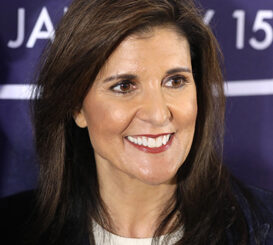The Budget aims to focus on infrastructure and connectivity, but lacks growth-invigorating proposals
Finance Minister Nirmala Sitharaman’s fourth successive budget, while commonsensical in its approach, is not exactly bubbling with new ideas. With the economy still in search of durable momentum that could help entrench the recovery from the last fiscal year’s record contraction, Ms. Sitharaman has missed an opportunity to address the flagging consumer spending in the wake of erosion in real incomes and savings through a combination of tax breaks for the middle class and cash handouts for the poor. And even as the Minister acknowledges the role public capital expenditure could play in crowding-in private investment at a time when “private investments seem to require that support” and help to ‘pump-prime’ demand in the economy, the Budget outlay of ₹7.50 lakh-crore for the capital account marks just a 24.4% increase from the revised estimate of ₹6.03 lakh-crore for the current fiscal. To be sure, Ms. Sitharaman’s speech highlights the PM GatiShakti, a “transformative approach for economic growth and sustainable development” that is to be powered by the ‘seven engines’ of roads, railways, airports, ports, mass transport, waterways, and logistics infrastructure. While the broad sweep of the public infrastructure envisioned by the programme could potentially be truly transformative if it were to be executed as imagined, the Budget is largely short on details where it concerns the specifics and pencils in some figures only for the roads and railways components. The Budget lists a ‘Master Plan for Expressways’ that will be formulated in 2022-23 under the scheme and projects the addition of 25,000 kilometers of roads to the National Highways network. The talk of enabling seamless multimodal movement of goods and people and providing multimodal connectivity between mass urban transit systems and railway stations, however, all sound a familiar refrain from past speeches.
Spending outlays on several other key sectors including health care, rural development and the vital jobs and income providing national rural employment guarantee scheme have all shrunk as a percentage of overall expenditure in the Budget estimates for fiscal 2023 from the revised estimates for the current year, even if in some cases only marginally. That these sectors have been forced to bear the impact of the Government’s keenness to broadly stick to a fiscal consolidation road map — with the Budget projecting a narrowing of the fiscal deficit to 6.4% of GDP in 2022-23, from a revised estimate for 6.9% — reflects on its priorities. Government spending on health care ought to have instead been significantly increased, with the lessons from the ongoing pandemic’s first two waves serving to illuminate the need for a sizeable enlargement of the public health infrastructure. A source of some solace, though, is the announcement of a ‘National Tele Mental Health Programme’ to address mental health problems that have been exacerbated by the claustrophobic lockdowns and plethora of anxieties triggered by the pandemic.
In a nod to the ruling party’s nationalist moorings and in line with the Government’s push to increase self-reliance or AtmaNirbharta, the Finance Minister has proposed a series of tariff and policy steps that could help bolster domestic manufacturing in the long run. A key policy element is a commitment to reduce import dependence in procurement for the country’s defense forces. To that end the Minister has proposed earmarking 68% of the armed forces’ capital procurement budget to domestic industry in 2022-23, a not insignificant increase from the current fiscal’s 58% target. The tariff rationalizations, which cover a broad swathe of items ranging from electronics, gems and jewelry, chemicals, inputs used by MSME units and project and capital goods, could, however, have varying short-term impacts. Specifically, the move to phase out the concessional rates in capital goods and project imports gradually and apply a moderate tariff of 7.5% could in the short term hurt infrastructure projects and the setting up of new manufacturing capacity, some proposed exemptions for advanced machinery notwithstanding. The Minister has tried to address the raging debate over how to deal with virtual currencies by adopting a twin-track approach. On the one hand Ms. Sitharaman proposes to introduce in the coming fiscal year a Central Bank Digital Currency that she posits will impart a big boost to the digital economy and “lead to a more efficient and cheaper currency management system”. The RBI-issued Digital Rupee would leverage blockchain and other related technologies. In parallel, she intends to tax income from the transfer of any virtual digital asset at the rate of 30%, with deduction allowed only for the cost of acquisition. It remains to be seen if the Government’s efforts at bringing the mushrooming trade and investment in a multiplicity of virtual digital assets including cryptocurrencies under the tax net would have a salutary impact besides adding a revenue stream to the exchequer. The Minister’s latest budget also skirts mention of the asset monetization plan mentioned in the last Budget and shows a sharp decline in capital receipts from disinvestment. With just ₹65,000 crore budgeted from asset sale for fiscal 2023, as opposed to ₹78,000 crore as per the revised estimates for the current fiscal, the Minister has had to increase gross borrowings to ₹14.95 lakh-crore, a 24% increase from the current fiscal’s budget estimate but a far sharper 43% jump from the revised estimate of ₹10.46 lakh-crore. The resource crunch manifest in the proposed higher debt issuance is ultimately bound to get more acute in the days ahead, given the Budget’s lack of growth-invigorating proposals.
(The Hindu)





Be the first to comment